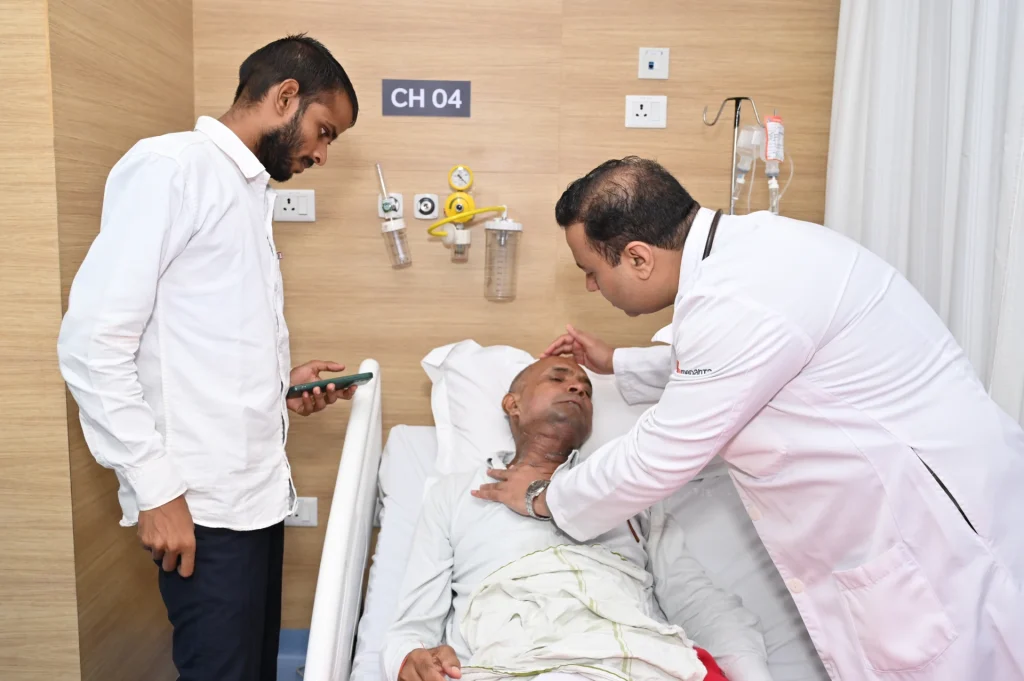- CANCER HELPLINE: 1800-22-1951
- 91 7317418888
- contact@drharshatreya.com
- CANCER HELPLINE: 1800-22-1951
carousel-slider domain was triggered too early. This is usually an indicator for some code in the plugin or theme running too early. Translations should be loaded at the init action or later. Please see Debugging in WordPress for more information. (This message was added in version 6.7.0.) in /home/locaqain/public_html/drharshatreya/wp-includes/functions.php on line 6121Hodgkin lymphoma (also known as Hodgkin’s disease) is a type of lymphoma, which is a cancer originating in the lymphatic system. This system is part of the immune system and helps the body fight infections. Hodgkin lymphoma specifically affects a type of white blood cell called lymphocytes and typically starts in the lymph nodes before it may spread to other parts of the body.
Hodgkin lymphoma is one of the most treatable types of cancer, especially if caught early. The five-year survival rate for early-stage Hodgkin lymphoma is over 90%, and even in more advanced stages, many patients respond well to treatment. Factors affecting prognosis include the stage, age, and overall health of the patient, as well as the specific subtype of Hodgkin lymphoma.

Hodgkin lymphoma, a type of cancer that originates in the lymphatic system, can present with a variety of symptoms, often subtle in the early stages. Awareness of these symptoms is essential, as early detection can improve outcomes.
One of the most common symptoms of Hodgkin lymphoma is swollen lymph nodes, particularly in the neck, armpits, or groin. These lymph nodes may appear enlarged but are generally painless. Occasionally, these nodes become tender following alcohol consumption.
Other signs include persistent fatigue and unexplained weight loss. A sudden drop in weight, without any change in diet or physical activity, can signal an underlying condition such as Hodgkin lymphoma. Individuals may also experience fever that comes and goes without a known infection, along with night sweats that can be so intense they may need to change clothing or bedding.
A characteristic symptom in some Hodgkin lymphoma cases is itching, often generalized and persistent. Although the exact cause of this itching isn’t fully understood, it’s thought to be related to the immune system’s response to cancer cells.
Additionally, some individuals may experience chest pain, coughing, or shortness of breath. This typically occurs when enlarged lymph nodes press on the windpipe or other structures in the chest, causing discomfort.
To diagnose Hodgkin lymphoma, a combination of exams, imaging, and biopsy is used:
Physical Examination: Doctors check for swollen lymph nodes and other general signs of health.
Imaging Tests:
CT Scan: Helps detect abnormal lymph nodes and other affected areas.
PET Scan: Provides information on active cancer cells within the body.
Biopsy:
Lymph Node Biopsy: The definitive way to diagnose Hodgkin lymphoma, where a sample of a lymph node is examined for cancer cells.
Bone Marrow Biopsy: In advanced cases, a bone marrow biopsy may be done to see if the lymphoma has spread.
Blood Tests: Blood tests assess overall health and help detect issues caused by lymphoma, such as anemia.
Treatment depends on the type and stage of Hodgkin lymphoma, as well as the patient’s age and overall health:
Chemotherapy: The primary treatment for Hodgkin lymphoma, which uses drugs to destroy cancer cells. It’s often given in cycles, with combinations like ABVD (Adriamycin, Bleomycin, Vinblastine, Dacarbazine) commonly used.
Radiation Therapy: High-energy rays are used to target and destroy cancer cells. Radiation is often combined with chemotherapy, especially for early-stage Hodgkin lymphoma.
Immunotherapy: For cases that are resistant to standard treatments, drugs like checkpoint inhibitors (e.g., nivolumab, pembrolizumab) can be used to help the immune system recognize and attack cancer cells.
Stem Cell Transplant: This is typically used in cases where Hodgkin lymphoma returns after initial treatment. A stem cell transplant involves high-dose chemotherapy followed by an infusion of healthy stem cells to restore bone marrow function.
Targeted Therapy: Drugs such as brentuximab vedotin target specific proteins on Hodgkin lymphoma cells and are used in cases of relapsed or refractory disease.
© 2024 Harshvardhan Atreya. All Rights Reserved.